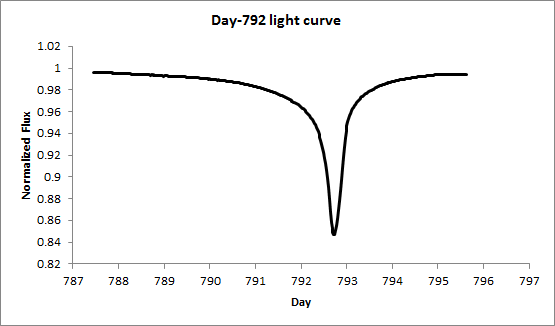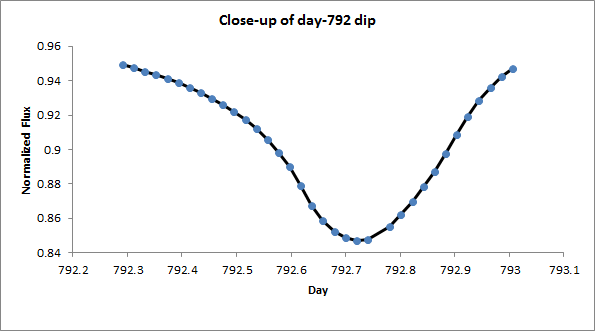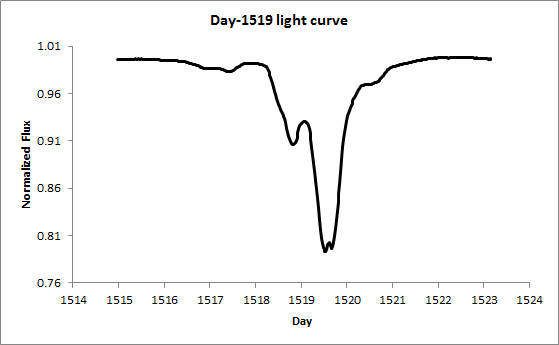Back in January, Bradley Schaefer published a finding that promised to be a bombshell: KIC 8462852 had been dimming at a rate of nearly 20% per century since 1890 (Schaefer, 2016). The finding was widely reported as refutation of the comet family hypothesis, and further evidence that KIC 8462852 might be home to a Type 2 alien civilization.
Data analysis is not always convincing, for all sorts of reasons. DASCH archival data — which Schaefer used in his work — is noisy, and apparently requires substantial know-how to process adequately. Schaefer's findings soon came under scrutiny on the basis that other stars in the archive seemed to show comparable trending (Hippke et al. 2016). Subsequently, a noticeably upset Schaefer wrote a response to Hippke that is well worth reading. To summarize the controversy, there has been a "stirring of the pot" and we might have to wait for analysis of Sonneberg observatory plates to resolve the matter convincingly.
The preceding overview is context for what I would really like to discuss: A paper with implications that seem to have escaped notice in this debate. The paper proposes a comet family model that attempts to explain at least some of the Kepler data (Bodman & Quillen, 2015). The key takeaway from the paper, in my view, is probably not the one the authors intended. It's actually a statement we find in the concluding section of the paper:
This comet family model does not explain the large dip observed around day 800 and treats it as unrelated to the ones starting at day 1500. The flux changes too smoothly and too slowly to be easily explained with a simple comet family model.
This remarkable acknowledgment should not be understated. The dip "around day 800" (from now on, the day-792 dip) is indeed large. It can't be dismissed as an amazing coincidence. To put it another way, "Ockham’s Razor tells us that it is very unlikely that one star will suffer two different mechanisms that are unique to that star" (Schaefer, 2016).
Bodman & Quillen are right about the day-792 dip. Let's take a closer look.


Light curves are normally U-shaped. In rare instances, they might be V-shaped. A full eclipse, for example, is V-shaped. I know this from running simulations and optimizing transit models. As a rule, light curves produced by objects smaller that the star will be U-shaped.
In order to produce the day-792 light curve, the corresponding transit would have to be considerably longer than the diameter of the star. It follows that the amount of light it can block (its opacity) must gradually vary in the direction of its orbit. At some point its opacity must peak, and we should be able to see a nearly U-shaped flux pattern produced by the peak of opacity as it moves across the face of the star, because of limb darkening. Indeed, it works as expected.


A comet family would not be able to produce such a smooth light curve. In simulations, even thousands of objects will tend to produce noticeable noise. The day-792 light curve would have to be produced by a swarm of debris or dust. I will go further: The debris distribution needs to be relatively flat in order to produce the opacity distribution that would explain the light curve.
It is true that other KIC 8462852 dips are more chaotic, but upon closer examination, we find they follow a similar pattern. The largest dip observed is the day-1519 dip, shown below.


There is a slow buildup, albeit noisy. The day-1519 transit has some features that suggest it lasts considerably longer than the amount of time required for any one particle to traverse the face of the star, which is consistent with the day-792 transit. It should not be treated as a U-shaped or V-shaped light curve.
References
Bradley E. Schaefer, 2016. KIC 8462852 Faded at an Average Rate of 0.165+-0.013 Magnitudes Per Century From 1890 To 1989. arXiv:1601.03256.
Hippke et al., 2016. KIC 8462852 did likely not fade during the last 100 years. arXiv:1601.07314v3.
Eva H. L. Bodman & Alice Quillen, 2015. KIC 8462852: Transit of a Large Comet Family. arXiv:1511.08821v1.



Comments